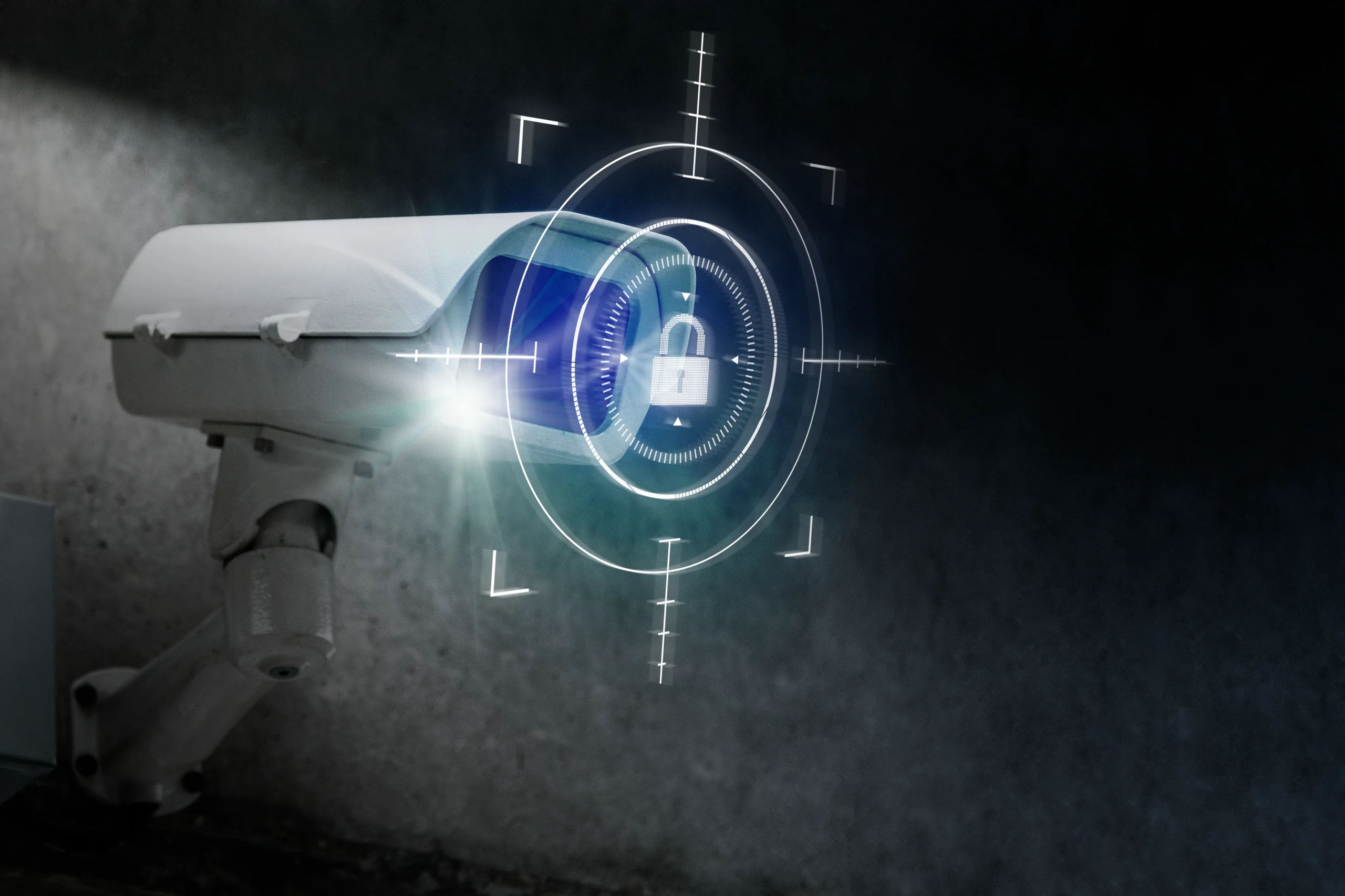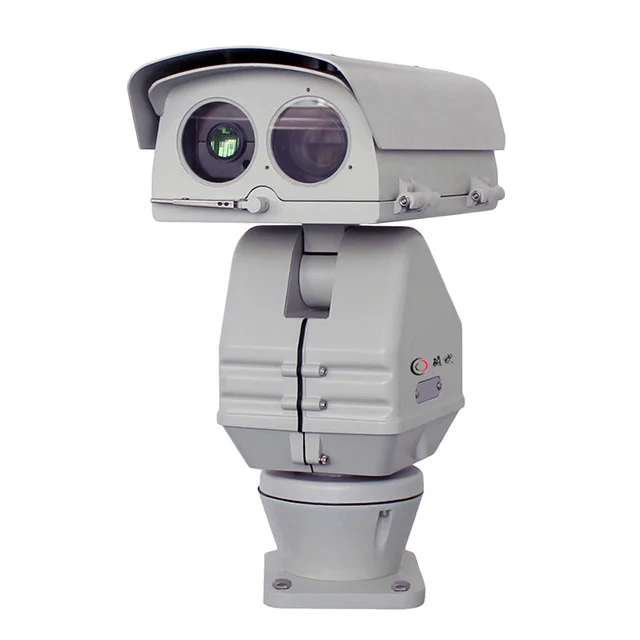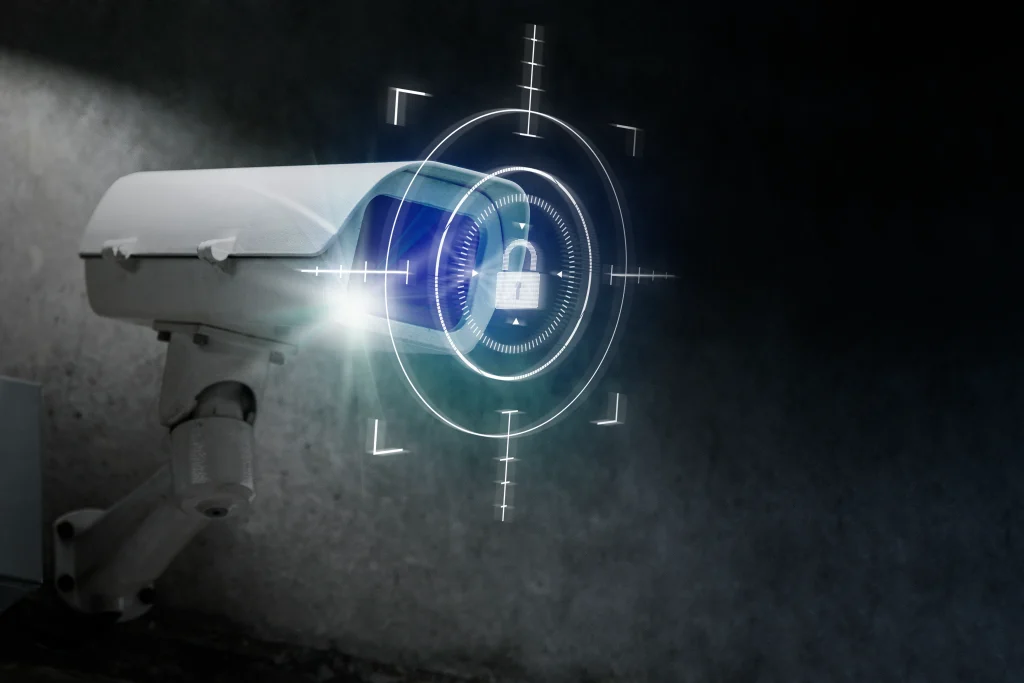Introduction
PTZ (Pan-Tilt-Zoom) cameras are super helpful for today’s security setups. They can move around and zoom in to show clear pictures for things like guarding buildings, watching traffic, or keeping nature safe. These cameras swing left and right, tilt up and down, and zoom close to cover wide spaces. But when it’s dark or dim, they have a hard time taking good photos.

To solve this, visible light and laser systems join forces. They help PTZ cameras see better at night. This article tells how these two kinds of light make PTZ cameras work great in the dark. It shows how lasers team up with visible light to make sharp, clear pictures in low-light places.
Understanding the Role of Visible Light in PTZ Cameras
The Basics of Visible Light and Night Vision
Visible light is what our eyes can see. It has wavelengths from 400 to 700 nanometers. PTZ cameras use this light to snap photos during the day or in bright spots. But at night, when there’s not much light, the cameras struggle. They can’t take clear pictures.
To fix this, many PTZ cameras have cool tools like infrared (IR) lights or starlight sensors. These let the camera see in dim places by using light we can’t see. For example, starlight cameras can take bright, colorful pictures even in very dark spots. This makes them awesome for night security.
These tools help a lot, but adding lasers makes PTZ cameras even stronger. Lasers let the cameras take clear photos in total darkness. This makes them super useful and trusty for keeping places safe.

How Lasers Supplement Night Vision in PTZ Cameras
Laser Systems for Nighttime Illumination
Lasers are a fantastic way to light up dark areas for PTZ cameras. Unlike regular IR lights, lasers shoot a bright, thin beam. This beam goes far and lights up big spaces with strong light. It’s perfect for places with no light at all.
For PTZ cameras, lasers send out a bright, tight light. This helps the camera see far-off things clearly, even in pitch black. Laser light doesn’t scatter like regular light or IR. So, it’s great for watching big areas like roads, fields, or borders at night.
Laser Light and Visible Light Synchronization
Using lasers with visible light is a big win. The two work together nicely. Lasers light up faraway stuff with a strong beam. At the same time, visible light brightens up closer areas. This teamwork lets PTZ cameras take nice pictures at different distances and in all sorts of light.
By mixing lasers with visible light, PTZ cameras get way better at night. The laser makes far things look clear. Meanwhile, visible light keeps close things sharp. This double-light trick is a solid fix for watching places in dim or dark spots where normal cameras don’t work well.
How Shuoxin’s PTZ Cameras Integrate Visible Light and Laser Systems
Shuoxin is a top company that builds smart security cameras. Their PTZ cameras use visible light and laser systems to boost night vision. These cameras have starlight sensors and built-in lasers. Together, these make the cameras work great in low light or at night.
Starlight-Level Ultra-Low Illumination for Color Imaging
Shuoxin’s PTZ cameras have starlight sensors. These sensors are good at taking colorful pictures in dim places. They work well with just a tiny bit of light. This makes them perfect for night security in spots with almost no light. But adding lasers makes these cameras even better.
Laser Illumination for Long-Range Night Vision
Shuoxin’s PTZ cameras also have laser systems. This laser helps the camera see things far away. It shines much farther than regular IR or visible light. The laser makes the camera awesome for long-distance night vision.
When the laser teams up with the starlight sensor, the camera works even better. The laser lights up far-off objects with a bright beam. At the same time, the starlight sensor keeps nearby objects clear. This teamwork makes sharp, top-notch videos in total darkness. It’s great for big security jobs in remote or dark places.
Benefits of Laser and Visible Light Integration in Shuoxin’s PTZ Cameras
Mixing visible light and lasers gives Shuoxin’s PTZ cameras lots of perks. Here are the main ones:
- Sharper Pictures: Lasers and visible light make photos clearer, even in total darkness. The laser brightens faraway things. Visible light lights up nearby spots. This makes pictures clear and detailed.
- Better Night Watching: The mix of lasers and visible light helps cameras work in tough spots. They see clearly in pitch black, fog, or dim areas.
- Bigger Area Coverage: The laser’s bright beam lights up huge areas far away. This makes the cameras great for watching big places like highways, borders, or open fields.
- Works in Any Light: Whether it’s super dark or a bit dim, the cameras take clear photos. The laser and visible light make sure the camera works well in all settings.
The Future of PTZ Camera Night Vision with Laser and Visible Light Integration
Mixing lasers and visible light is changing how PTZ cameras work at night. As tech gets better, future cameras will probably have even brighter lasers and sharper sensors. This will make them even better at seeing in low light or at night.
This light teamwork is super useful for jobs that need constant watching. For example, security, transportation, public safety, and border patrol all benefit. With clearer views and longer reach, PTZ cameras with lasers and visible light will keep people and places safer.
Conclusion
By using visible light and laser systems together, PTZ cameras see much better at night. They take sharper, clearer pictures in dim or dark places. Lasers light up far-off objects with a bright beam. Meanwhile, visible light keeps nearby things clear. This combo is a great fix for night security.
Shuoxin’s PTZ cameras use starlight sensors and built-in lasers. These features make the cameras work great in any light. They give top-quality videos even in total darkness. This makes Shuoxin’s cameras a smart pick for tough security jobs.
FAQ
Q1: How do lasers help PTZ cameras at night?
A1: Lasers shine a bright, thin light. This helps PTZ cameras see faraway things clearly, even in total darkness. With visible light, they make both far and near objects look sharp.
Q2: Can lasers light up far things in dim places?
A2: Yes, lasers are awesome for lighting up faraway stuff in dim spots. Their tight light goes farther than regular IR systems. This helps PTZ cameras take clear photos from a distance.
Q3: How does Shuoxin’s PTZ camera use visible light and lasers together?
A3: Shuoxin’s PTZ cameras have starlight sensors and built-in lasers. The laser brightens far objects. Visible light keeps nearby things clear. This teamwork boosts the camera’s night vision.


